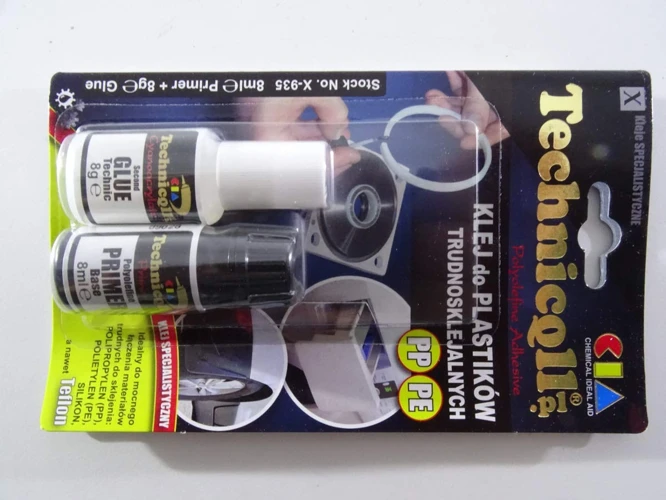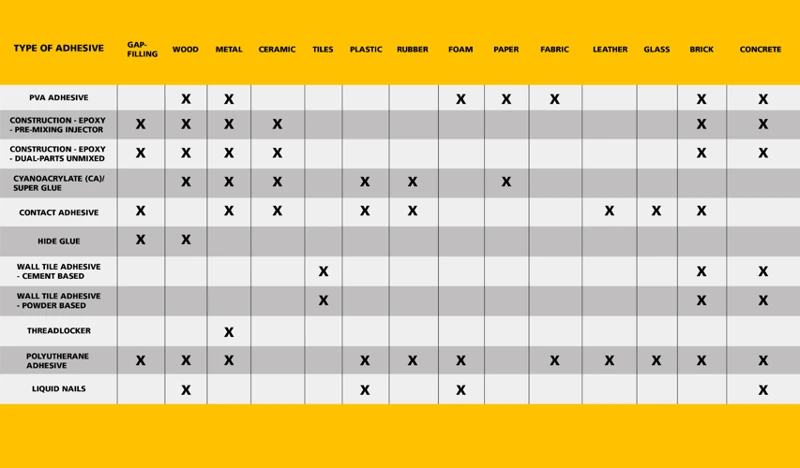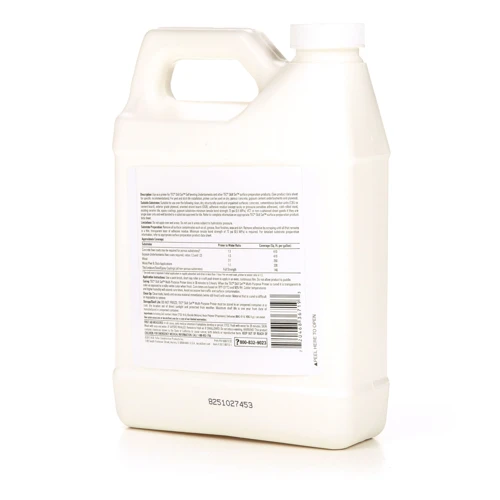What is PTFE?
PTFE, or polytetrafluoroethylene, is a synthetic fluoropolymer widely recognized by its brand name Teflon, a registered trademark of Chemours. It’s a remarkable material that has found applications across various industries, from cookware non-stick coatings to aerospace components. PTFE is highly valued for its unique combination of properties.
Unique Properties of PTFE
PTFE is renowned for its non-stick surface, high melting point, and chemical inertness, which means it’s resistant to most chemicals and solvents. It also has excellent thermal and electrical insulation properties. However, these same characteristics that make PTFE so versatile also present significant challenges when it comes to adhesion. The non-stick surface inherently repels substances, making bonding a task that requires specialized techniques and materials.
Preparation for Gluing PTFE
Surface Preparation Tips for PTFE
- Clean the PTFE surface thoroughly to remove any contaminants that could impede adhesion.
- Use a mild abrasive to gently roughen the surface, which can help the adhesive to grip better.
- Ensure that the PTFE is completely dry before attempting to apply any adhesive.
Importance of Chemical Etching in PTFE Adhesion
For a successful bond, the slick surface of PTFE needs to be chemically etched. This process involves using a sodium-based etchant that reacts with the PTFE, altering the surface structure to make it more amenable to bonding. This critical step cannot be overlooked if one aims for a durable bond.
PTFE Adhesive Guide
Choosing the Right PTFE Glue
Selecting an appropriate adhesive is crucial for effective PTFE bonding. Specialty glues designed for PTFE or fluoropolymer bonding, such as epoxy-based or modified acrylic adhesives, are typically recommended and provide superior performance over general-purpose adhesives.
Industrial PTFE Adhesion Techniques
In an industrial setting, methods such as plasma treatment or flame treatment are sometimes used alongside or as an alternative to chemical etching. These processes modify the PTFE surface at a molecular level, enhancing the bonding capability of the material.
Gluing PTFE Tips and Methods
How to Bond PTFE: Step-by-Step Process
- Begin with surface preparation, cleaning, and etching as necessary.
- Select a suitable PTFE adhesive based on the application and environmental factors.
- Apply the adhesive evenly to the prepared surface of the PTFE.
- Join the PTFE to the substrate, applying firm pressure to ensure a strong bond.
- Allow adequate time for the adhesive to cure, following the manufacturer’s recommendations.
PTFE Glue Methods for Different Applications
Different applications may require different PTFE glue methods. For instance, thin film applications might use a sprayable adhesive, while larger, structural applications could necessitate a more gel-like epoxy that can be spread with a tool.
Bonding PTFE to Metal and Other Materials
PTFE Plastic Bonding Strategies
When bonding PTFE to plastic, it’s essential to ensure that the plastic is compatible with the selected adhesive and that both surfaces are properly prepared. The chosen PTFE adhesive should be formulated to bond well with both PTFE and the specific type of plastic.
Teflon Adhesive Techniques for Metal
The strategies for bonding PTFE to metal depend on the type of metal and the application’s specific requirements. Metals should be free of oils, dirt, and oxides, with an adhesive selected that is capable of withstanding the expansion and contraction that metals typically undergo with temperature changes.
Ensuring Strong and Durable PTFE Joints
Waterproof PTFE Glue: Ensuring Longevity
For applications exposed to moisture or submerged in water, waterproof PTFE glue is essential. These adhesives are designed to maintain their bonding strength even when in contact with water, thereby ensuring the longevity of the bond.
PTFE Joining Solutions and Best Practices
Adhering to best practices such as proper surface treatment, selecting the right adhesive, and allowing for complete curing is vital for strong and durable PTFE joints. Consulting technical datasheets and manufacturer guidelines can greatly enhance the success rate of PTFE joining solutions.
Troubleshooting Common Issues with PTFE Adhesion
Making Repairs with PTFE Adhesive in Extreme Conditions
Repairing PTFE in extreme conditions, such as high temperatures or chemical exposure, requires adhesives that can withstand these harsh environments. It is also important to revisit the surface preparation steps to ensure that the bonding surfaces are in optimal condition for adhesion.
If you’re embarking on a project that involves gluing different materials, you might be wondering about the best methods to use. Whether you’re working with PTFE, PLA, TPU, or need to make your own adhesive, we’ve got you covered. For those working with 3D printing materials, check out our guides on how to glue PLA and how to glue TPU. If you’re interested in crafting your own adhesive, don’t miss our tutorial on how to make PVA glue. And for those specifically looking to learn about PTFE, keep reading as we delve into the nuances of how to glue PTFE effectively.
Maintaining the Bond: Long-Term Considerations
Long-term maintenance of PTFE bonds involves regular inspections and, if necessary, re-application of adhesive in areas where the bond may have weakened. Factors such as environmental stress, mechanical loads, and thermal cycling should be considered when evaluating the longevity of a PTFE bond.
By understanding the unique properties of PTFE and utilizing the proper techniques and materials, strong and reliable bonds can be achieved. Whether you’re working with industrial PTFE adhesion or a simple home repair, following the gluing PTFE tips and methods outlined above will greatly increase your chances of success.





